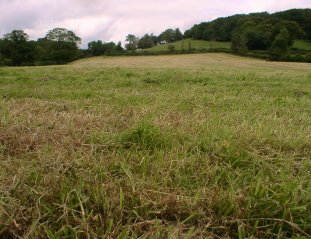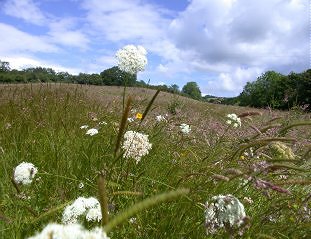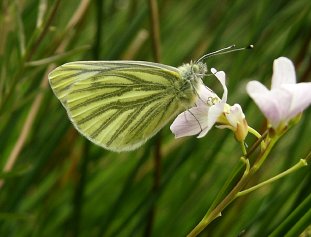 |
Modern intensive agricultural grasslands are very
different from the grasslands of even 50 years ago. At this time, many other plants,
including different grass species, grew in the fields. Not only were these grasses of low
yield but they were also of less nutritional value to livestock. Because the modern
grassland contains few plant species, its biodiversity is much reduced. |
 |
Some of the old flower-rich fields still remain. Here
biodiversity is far higher. Wildflowers, including orchids and herbs, often make up a
major part of the flora. The actual numbers of living things which these areas support can
be amazing. In 1 acre (.4Ha) of soil, there can be as many as 400 million insects and 600
million mites. |
 |
In contrast to intensive grasslands, the wide range of
plants found in these flower rich fields provide food for an enormous variety of
invertebrates. Butterflies, such as the Green-veined White, lay their eggs on Lady's Smock
(left), grasshoppers and crickets abound and the air is filled with the hum of busy
insects. A wider range of mammals is also present in the non-intensive grassland. Animals
such as voles live in these habitats, providing food for predators such as stoats, owls
and foxes. |
|
Continue |